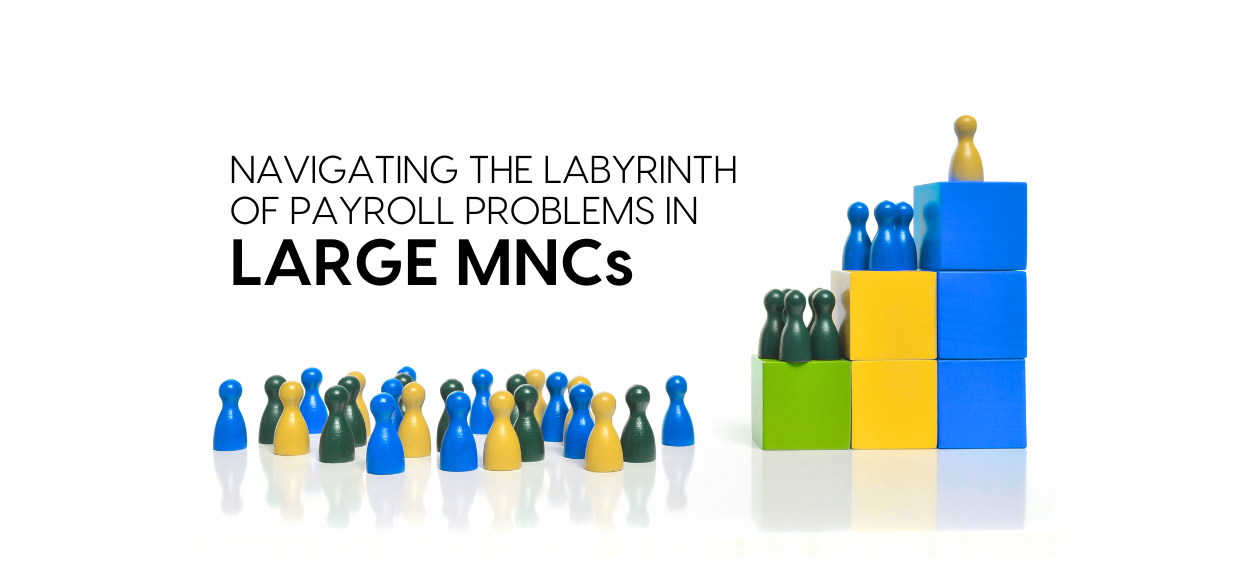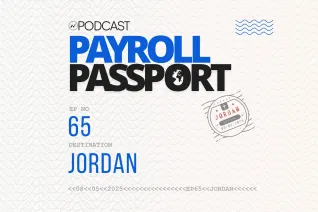Navigating Global Payroll Complexities: A Roadmap for Large MNCs

A large multinational corporation spans continents, from bustling metropolises to remote outposts. Imagine the chaos if employees in one region didn't receive their paychecks on time while others faced delays due to complex regulations. Keeping payroll running smoothly across diverse locations is a logistical nightmare. This is where a well-coordinated global payroll strategy becomes crucial.
Organizations are increasingly aware of the importance of implementing a strategy to reduce payroll costs and migrate towards a global HR and payroll strategy. Deloitte's report indicates that there has been almost a 40 percent increase in organizations that have or plan to develop a payroll strategy since 2018, which is a testament to that.
ALSO READ: What is Unified Multi-country Payroll and how it benefits Businesses
Managing payroll is one of the biggest operational challenges for large multinational corporations with employees worldwide. Navigating the labyrinth of compliance regulations – from overtime pay calculations in Europe to year-end bonus structures in Asia – and respecting cultural norms around paydays and benefits makes achieving a consistent payroll experience an enormous undertaking.
Large MNCs typically have very sizable employee populations in a few key countries, moderate head counts in others that may house regional headquarters or major revenue generators, and relatively small numbers spread across a long tail of additional locations. This fragmented workforce distribution presents unique challenges.
For instance, managing multiple payroll vendors for different regions or ensuring timely processing for smaller employee groups becomes difficult. Maintaining consistent communication across diverse locations with varying regulations and cultural expectations adds another layer of complexity.
Evaluating the Global Payroll Conundrum
For multinational corporations (MNCs) with vast employee bases worldwide, managing payroll presents a unique set of challenges. Here, the priority is achieving streamlined, high-volume payroll processing to ensure timely and accurate payments for thousands of employees. However, maintaining a consistent employee experience across diverse locations with varying regulations and cultural norms adds another layer of complexity. According to Deloitte, 73 percent of organizations outsource some aspect of payroll, highlighting the difficulty of managing global payroll in-house for large companies.
Large MNCs strive to achieve three core objectives
Scalability and Efficiency: Process payroll for large employee bases consistently and efficiently.
Detailed Reporting and Visibility: Maintain clear visibility into payroll activities across all locations.
Automation: Automate routine tasks to free up payroll professionals for more strategic work.
Achieving all three objectives in a unified payroll strategy is a challenge. Excessive automation can compromise the personalized experience. However, automation empowers payroll professionals to focus on meaningful employee interactions and strategic initiatives, reducing the time spent on repetitive tasks.
The ideal solution lies in achieving a balance between automation and flexibility. Global payroll platforms with configurable settings can offer standardized processes that can adapt to regional needs. Additionally, leveraging regional expertise can ensure smooth payroll operations for smaller locations.
YOU MAY ALSO LIKE: Navigating the Most Common Payroll Processing Challenges
Balancing the Core Objectives
Many large MNCs have invested heavily in payroll technology and global outsourcing solutions to achieve this balance. Some opt for a centralized approach, bringing payroll in-house through shared service centers to maintain control and potentially reduce costs in the long run. However, it requires significant upfront investment and expertise.
Others adopt hybrid models, outsourcing payroll in specific regions or for particular employee segments, thereby leveraging regional expertise and reducing overall costs. This, however, requires strong communication and process alignment across different providers.
The ideal solution depends heavily on the company's projected global footprint and workforce distribution over a 5-10-year horizon. Those with a highly centralized hiring and growth strategy should optimize for scale and automation through global payroll platforms. Companies targeting broader international expansion may prioritize flexibility by utilizing a best-of-breed ecosystem of local and regional payroll providers.
ALSO READ: Leveraging technology for global payroll compliance efficiency
Evaluating the Solution Landscape
There is no one-size-fits-all global payroll model for large multinationals. The key is developing a coherent strategy aligned with your specific workforce distribution, growth plans, and business priorities. With so many variables at play, payroll has become a critical factor shaping the employee experience and operational resilience for globally distributed enterprises. At Neeyamo, we understand this and offer a solution that aligns with your unique needs.
An integrated payroll solution, such as Neeyamo Payroll™, is essential for organizations to navigate the complexities of global payroll. As it not only offers scalability to handle large and diverse workforces, compliance management to ensure adherence to multi-country regulations, and automation capabilities to streamline repetitive tasks and improve efficiency.
Learn more about how Neeyamo can help you balance efficiency, compliance, and employee experience by sending us an email at irene.jones@neeyamo.com.
Latest Resources
Stay informed with latest updates
If you're curious and have a thirst for knowledge pertaining to the HR, payroll, and EOR universe, don't miss out on subscribing to our resources.















